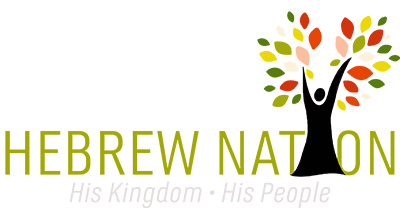Biblical history is more than just facts. These shows seek to strengthen your understanding about culture, people, and how Yahweh has interacted with mankind.
Latest Podcasts in Biblical History
“Come out of her, My people” Show ~ Mark Call weekly
There was an "incident" today in Swamp Central that certainly does not look like an "accident." But once again, we are being expected to believe that it is the unfortunate result of just incredible incompetence. And before the bodies of the passengers on a commercial...
Now Is The Time w/Rabbi Steve Berkson | Forgiveness, Resolution, Reconciliation & Restoration | Part 3
In this teaching, Rabbi Steve Berkson focuses on what follows forgiveness, which we seek when we kneel before the Father after trespassing against Him. As he takes us to the first of the passages in this teaching, Luke 23:33, we see Messiah Yeshua as He is being...
Dr Hollisa Alewine – Footsteps of Messiah Part 141 (Pomegranate Waves)
Mark Call – Parsha “Vaera” teaching from Shabbat Shalom Mesa
The second Torah portion reading from the Book of Exodus this week is in some respects THE beginning of the Exodus itself, in that it describes the first set(s) of the 'Ten Plagues of Egypt." 'Vaera' (Exodus 6:4 through chapter 9), beings, however, with an explanation...
Torah Teachers’ Round Table – Tanakh Edition – Isaiah chapter 66 part 1
This week and next, the Torah teachers are wrapping up the study of the Book of YesheYahu, or Isaiah, the prophet, with the final chapter, 66. And, as noted, it is only one of the most important in Scripture, when it comes to things happening today, but may constitute...
Drive Time Friday
It's been an amazing week. Join Mark Call and David Justice for a look back.
“Come out of her, My people” Show ~ Mark Call weekly
Why would newly-inaugurated President Trump take time out from arguably the busiest week in US presidential history to hold a big PR event announcing "Project Stargate" (what a suggestive name, too!) with the intent to spend a half-TRILLION dollars to develop an AGI,...
Mark Call – Parsha “Shemot” teaching from Shabbat Shalom Mesa
The first Torah portion reading from the Book of Exodus this week is 'Shemot' (Exodus 1:1-6:2), which is of course the Hebrew name of the Book as well. And it begins the story of Moses (Moshe) and the Exodus from Egypt, and bondage, but actually begins even a bit...
Torah Teachers’ Round Table – Tanakh Edition – Isaiah chapter 65
This week and next, the Torah teachers will begin to wrap up the study of the Book of YesheYahu, or Isaiah, the prophet, with the final two chapters, 65 and 66. And, as noted, they are not only some of the most important in Scripture, and certainly prophetic, but may...
Drive Time Friday
At just under T-minus 3 days, things are building toward SOME type of crescendo. Just exactly WHAT the Deep State will do is the remaining question. Join David Justice and Mark Call as they discuss the news of the week, and the options ahead.
“Come out of her, My people” Show ~ Mark Call weekly
Many of us by now have almost gotten used to "The Big Lie." And yet, what are actually seeing really goes far beyond that. In 1984, George Orwell wrote that "Freedom is the freedom to say that two plus two equals four." Does that include being able to admit that...
Now Is The Time w/Rabbi Steve Berkson | Forgiveness, Resolution, Reconciliation & Restoration | Part 2
How important is forgiveness? Rabbi Steve Berkson takes us to Matthew chapter six where he shows us the “model prayer” given by Yeshua when His disciples asked how they should pray. In the prayer, which is just an outline for how to pray, Yeshua hits the issue of...






